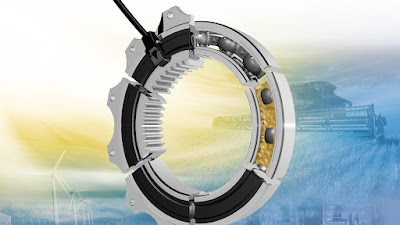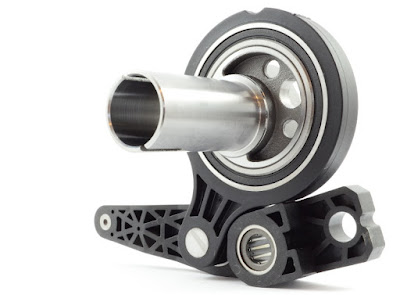What is a bearing and what does it do?
Welcome to our blog exploring the subject of bearings. A bearing, in its simplest sense, is a mechanism that supports the rotating or linear movement of various machine components. Bearings do this by reducing friction and minimizing the wear and tear that would otherwise result from the rubbing of these components. Bearings are widely used in various industries today, from automotive to aerospace, and play a crucial role in enabling the smooth, efficient functioning of machinery.
This blog aims to provide readers with a comprehensive overview of what bearings are, how they work, and their different types and applications. We will delve into the mechanics of bearings, exploring the different materials used to make them and how they are designed to handle different loads and speeds. We will also discuss the different types of bearings, including ball, roller, and sliding bearings.
1. A bearing is a mechanical component that supports and reduces friction between moving parts.
A bearing is a mechanical component that is essential to many machines and devices. It is designed to support and reduce friction between moving parts, allowing them to move smoothly and with minimal wear and tear. Without bearings, the stresses and friction between moving parts would cause significant damage to both the machine and its components. Bearings can be found in a wide range of applications, from automobiles to aerospace and everything in between. They come in various sizes and configurations, each tailored to suit specific needs and requirements. Bearings are a crucial component in any moving machinery or equipment, ensuring its smooth operation and longevity.
2. Bearings are used in a wide range of applications, from small household appliances to large industrial machinery.
Bearings are an essential component used in a wide variety of applications across various industries. They are mainly used to reduce friction between two moving parts, enabling them to move smoothly and effortlessly. Bearings can be found in almost every machine or equipment requiring rotational or linear movement, from small household appliances to large industrial machinery. They are commonly found in cars, planes, trains, pumps, motors, turbines, gearboxes, and other types of machinery. The primary function of a bearing is to carry loads and reduce friction, thus extending the life of the equipment or machinery. From household appliances, like washing machines and blenders, to large industrial equipment, bearings play a vital role in ensuring that the machinery operates smoothly and reliably.
3. There are many types of bearings, including ball bearings, roller bearings, and plain bearings.
Bearings are an essential component in many different kinds of machinery and industrial equipment. Their primary function is to reduce friction between moving parts, ensuring smooth and consistent operation. There are several types of bearings available in the market, including ball bearings, roller bearings, and plain bearings. Ball bearings use balls as the rolling element to minimize friction between two surfaces in motion. They are commonly used in applications where speed, precision, and load capacity are essential. Roller bearings, on the other hand, use rollers as the rolling element and are ideal for applications that require high radial loads and moderate axial loads. Lastly, plain bearings rely on a lubricated sliding surface and are used in applications where low speed and high loads are involved, such as masonry works and bridges. Understanding the different types of bearings is crucial in selecting the appropriate bearing for a specific application, contributing to enhanced performance, durability, and safety.
4. A properly functioning bearing can extend the life of a machine or device and improve its performance.
A bearing is a mechanical component that supports the weight, rotation, or oscillatory motion of a machine or device while minimizing friction between the moving parts. It is a critical component of many industrial machines, including motors, pumps, turbines, and generators. A properly functioning bearing can extend the life of a machine or device and improve its performance by reducing friction, heat, and energy consumption. Bearings can come in various shapes, sizes, and materials depending on the specific application they are intended to serve. The choice of bearing type is crucial for the proper functioning of a machine or device, and ensuring that the right bearing is used in the right application is essential for peak performance and longevity. Regular maintenance and inspection of bearings can also help identify potential problems before they result in costly downtime and repairs.
5. Regular maintenance and replacement of bearings is important to ensure optimal function and prevent damage to machinery.
Bearings are crucial components that facilitate movement and reduce friction in machinery. They are designed to support and guide rotating shafts and other moving parts, enabling smooth and efficient operation. However, over time, bearings can wear out, malfunction, or break down completely, leading to machinery failure and costly repairs. Regular maintenance and replacement of bearings is therefore essential to ensure optimal function and prevent damage to machinery. By monitoring bearing performance, detecting early signs of wear and tear, and replacing worn or damaged bearings when necessary, equipment owners and operators can extend the lifespan of their machinery, reduce downtime, and ensure the safety and productivity of their operations.
In conclusion, bearings play a crucial role in countless everyday machines and applications. From the wheels on your car to the motors powering your home appliances, they allow for efficient and smooth rotational motion. While there are many different types of bearings out there, all function on the same basic principle of reducing friction between two surfaces. As technology continues to advance and improve, it will be interesting to see what new and innovative uses for bearings will be discovered in the future.




Megjegyzések
Megjegyzés küldése